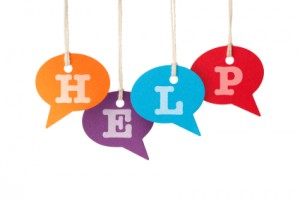Business leaders, entrepreneurs, sales people and marketers utilize enthusiasm to draw people to their ideas. They passionately motivate us to follow and take action. Enthusiasm creates an emotional attachment.
Beyond the emotion, we soon find ourselves wanting more. We want to trust that we should follow, not follow blindly. We need proof that the words are supported by facts. We need evidence. We are convinced by confidence.
Enthusiasm opens the door, confidence is the closer. We are attracted by enthusiasm. We believe in confidence. Enthusiasm is selling, marketing and promoting. Confidence is demonstrating, providing proof and creating trust to solve problems and fulfill needs. Knowing the difference is very important. Knowing how to balance the two requires expertise.
A person that lacks confidence will often exude excessive enthusiasm to mask insecurities or lack of evidence. Have you ever found yourself so engaged by a sales person that you forget you are being sold? Enthusiasm wins. The result may be buyer remorse or worse, deception. Perhaps a new hire enthusiastically convinces you that they can “do the job” and soon the facts do not support reality. A very expensive mistake for a small business – costing the company time and money.
On the flip side, a confident person can be so overtly confident they fail to listen to others or fail to create a following. Confidence is not arrogance. Confidence can easily delude rational thinking. The love of power convinces the most confident they can not fail, thus losing all sense of humility and gratitude. When you look around you and no one is cheering you along, your confidence has removed your ability to attract others. There is no emotional appeal. You are now the leader of no one.
Confidence is defined as full trust; belief in powers, trustworthiness, or reliability of a person or thing, belief in oneself and one’s powers or abilities; self-confidence; self-reliance; assurance.
Enthusiasm is defined as absorbing or controlling possession of the mind by any interest or pursuit; lively interest.
How do you create balance and avoid the extremes? The perfect blend of confidence and enthusiasm is pitchman Ron “Ronco” Popeil. He used demonstration to prove his inventions were viable and trustworthy. He used hype and selling to capture our mind share and imagination. Who can forget his famous, “But wait, there’s more!” Son of an inventor, Popeil is one of the most famous marketing pitchmen. He showed you how you could dice onions, so you won’t shed a tear. How you could depend on his electronic dehydrator to feed your children healthy fruit snacks instead of candy. The lessons in all the infomercials where about solving a problem. Confidently.
What is the financial impact when you expertly blend confidence and enthusiasm? Many of the Popeil inventions, most designed by Ron’s father, sold over 2 million. Ron Popeil is not rich solely from his fishing poles and spray on hair inventions. He is rich because he used enthusiasm to get our attention followed by confidently demonstrating how he solved our problems. He sold it. We bought it. We bought his confidence.
Whether you are pitching for investor dollars or motivating your sales team, you must build trust. Demonstrate reliability and accountability. Show the why. Why you, why your company, why your ideas, why now. Then use your persuasive personality to make sure the message is received, understood and people are left wanting more.
Enthusiasm without evidence is hype. Hype doesn’t convince anyone, only gives us reason to be suspect. Don’t oversell, don’t undersell. Confidence alone is mundane. Lead with enthusiastic confidence. A moderation of the two, equal but not separate, wins.
“Without a humble but reasonable confidence in your own powers you cannot be successful or happy.” Norman Vincent Peale
Jamie Glass, Founder, President and CMO of Artful Thinkers





You must be logged in to post a comment.